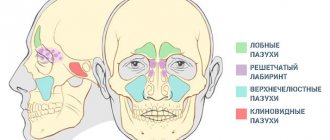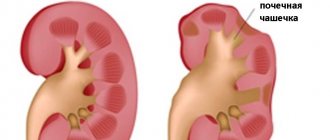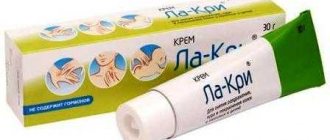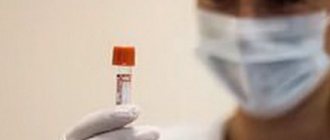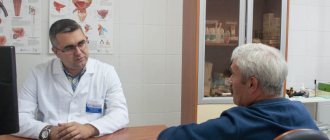Causes
There are 2 causes of intestinal infection in people, and both of them are a consequence of the penetration of harmful microorganisms into the body. In the first case, the disease is caused by intestinal viruses. There are about 10 groups of them. The most famous and common among them are enterovirus, adenovirus and rotavirus intestinal infections. Infants are very susceptible to rotavirus, or as it is popularly called “intestinal flu”. The second causative agent of intestinal infection in young children is bacteria. Bacterial infection is much better known under the names: coli infection; dysbacteriosis; salmonellosis and others. Infection with intestinal infections occurs through the fecal-oral route, that is, through the mouth. And the mediators can be dirty hands, unwashed fruits, non-compliance with hygiene standards. You can't keep an eye on your child here. In general, children under the age of seven are most susceptible to intestinal infections. After all, children's immunity to pathogenic bacteria and viruses is very weak compared to adults. This is especially true for newborns.
How can you tell if dehydration is developing?
Intestinal infections lead to the body losing water and salts (sodium, potassium, chlorine, etc.) due to vomiting and diarrhea. Dehydration is one of the main dangers of an intestinal infection, as it can very quickly lead to death, especially in young children. A parent should be wary if he sees the following signs:
- dry mucous membranes of the mouth and tongue;
- grayish skin;
- saliva viscosity increased;
- the child is lethargic, sleepy;
- the baby’s fontanelle on the head sinks, the pulse quickens;
- the baby peed twice or less in 12 hours, the amount of urine is small, it may be dark, with a strong odor;
- intense vomiting, the child cannot be given anything to drink. In this case, you should go to the hospital, where the child will be given a drip and the fluid balance in the body will be restored.
Symptoms
The first signs of rotavirus can appear within 24 hours after infection, but more often they appear 3-5 days after the virus enters the body. The symptoms of the disease are acute and obvious: the temperature rises sharply and strongly (up to 38-390); vomiting occurs several times a day (up to 3-6); the general condition of the child is lethargic, apathetic; frequent watery diarrhea begins with a pronounced light yellow tint and an unpleasant sour odor; redness of the mucous membranes of the eyes and throat occurs. Along with the manifestations of the disease described when rotavirus occurs, in the case of enterovirus infection the following may be observed: fever, convulsions, muscle and head pain. Signs of a bacterial infection are similar to the manifestations of a viral infection - these are the same elevated temperature, but up to 37-380C, vomiting (with viral infections it is always present, and with bacterial infections - in half the cases), diarrhea (if watery yellow diarrhea is observed with viral infections, sometimes with foam, then with a bacterial infection it necessarily contains inclusions of mucus, has a greenish tint, sometimes small blood clots are found in the stool - in an advanced form.
Diagnostics
Bacteriological cultures of stool and, in some cases, vomit. This is the leading diagnostic method. Determines which microbe is causing the intestinal infection. To analyze the stool, a smear is taken from the child’s anus (it is also called a “VD smear” or “intestinal group smear”). The resulting material is sown on special nutrient media. After a few days (usually 5-7 days), colonies of bacteria grow, which can be examined under a microscope and tested using various methods. Unfortunately, it is not always possible to detect the pathogen. Blood tests to determine the increase in antibody titer to any pathogen. Determine the reaction of the immune system to a suspected infection. If there is an increase in antibodies to a specific pathogen, then we can say with confidence that the person is sick (or has been sick). This method is rarely used in practice. Express diagnostics: enzyme-linked immunosorbent assay (ELISA) and other laboratory tests. They are mainly used in hospital settings. Scatological analysis of stool. In it you can see the degree of digestion of food, blood, mucus and protozoa (amoeba and lamblia).
Prevention of intestinal flu
There is no vaccine for intestinal viruses. Therefore, the only way to avoid infection and prevent further spread of the infection is to follow the rules of hygiene:
- Always wash your hands after returning from the street, the toilet, or traveling on public transport.
- Wash all vegetables and fruits (even bananas and kiwis) before eating.
- Drink only boiled and bottled water, not raw (!).
If someone in the house is sick:
- Carry out wet cleaning daily. Wipe all surfaces and objects that a sick person comes into contact with (door handles, plumbing fixtures, especially the toilet seat, children's potty). Viruses are resistant to alcohol and ordinary detergents, so use disinfectant and chlorine-containing household chemicals.
- Dishes, bed linen, and hand towels must be individual.
- Wash all clothes that may have traces of vomit or feces on them immediately at a temperature of at least 60°.
Be healthy!
Author:
Baktyshev Alexey Ilyich, General Practitioner (family doctor), Ultrasound Doctor, Chief Physician
Treatment
The biggest mistake parents make is the desire to stop seemingly unwanted manifestations of the disease. But in the first hours this is strictly forbidden, because vomiting and diarrhea are a protective reaction of the body, which is trying to cleanse itself of toxins. Stopping cleaning will lead to even greater intoxication. It is important to constantly replenish the loss of fluid and mineral salts (potassium, sodium, calcium). You should ensure that your child drinks plenty of fluids. It is necessary to drink with special solutions. No juices or dairy! For acute intestinal infections, a saline solution is used: 1 teaspoon of table salt, 4 teaspoons of sugar and 1.5 teaspoons of baking soda per liter of water. You need to give your child 2-3 teaspoons of water every 3-5 minutes. If a child vomits, then it is necessary to drink in small portions so as not to provoke repeated attacks. It is best to give the child a warm drink (at body temperature): in this case, the absorption of liquid from the intestinal walls into the blood will occur as quickly as possible, which is now extremely important. Feeding a child who has an intestinal infection is extremely undesirable and one might even say that it is impossible. Hunger is the second cure in such a situation. The gastrointestinal tract is now affected, it has no time to digest food. When the child feels better and he still demands to eat (only in this case!), stick to the diet: light rice soup, oatmeal or rice porridge, low-fat cottage cheese or kefir, mashed potatoes with water. You can also make a puree from baked apples, steamed carrots, pumpkin, zucchini, grated apples and bananas. It is forbidden to give your child foods that cause gas or contain coarse fiber. And no sweets, fatty, spicy, salty or smoked foods. Portions should be small: it is better to feed the child often, but in fractions. Monitor your child's hygiene very carefully. Be especially careful about hand washing after using the toilet and before eating. Only a doctor can judge the advisability of prescribing antibiotics and other medications. Therefore, you should not self-medicate.
ACUTE INTESTINAL INFECTIONS in the practice of an emergency physician
In accordance with WHO recommendations, the term “acute intestinal infections” (AI) combines more than 30 diseases of bacterial, viral or protozoal etiology, the main symptom of which is acute diarrhea (Fig. 1).
In practice, all registered OCIs are usually divided into three main groups:
- diseases caused by an unknown pathogen (about 70% of cases);
- acute intestinal infections caused by an identified pathogen (about 20%);
- bacterial dysentery (about 10%).
The fact that 70% of cases of AEI occur in diseases with an unknown pathogen can be considered a consequence of the “syndromic” principle of diagnosis, generally accepted for AEI, which is fully justified in diseases that are not of an epidemic nature. In fact, with sporadic acute intestinal infections (and they are the majority), the similarity of the clinical picture and course of diseases of various etiologies makes it possible not to waste time on accurately identifying the causative agent, since this does not significantly affect the choice of treatment strategy and tactics. In case of epidemic acute intestinal infections, the earliest possible isolation and identification of the causative agent of the disease, on the contrary, becomes the most important task, which, unfortunately, requires a significant investment of time and the presence of a well-equipped laboratory.
It is important that the most extensive group of acute intestinal infections of unknown etiology also includes the majority of so-called foodborne toxic infections (PTI) - this group consists of approximately 20 etiologically different, but pathogenetically and clinically similar diseases that do not pose an epidemic danger.
In more than half of the cases, the etiology of acute intestinal infections cannot be established either clinically or laboratory. This task, as well as the choice of pathogenetic treatment, especially cannot be solved (and is not posed) at the stage of prehospital care. The efforts of the emergency medical technician (EMS) should be aimed at:
- correction of severe violations of the vital functions of the patient’s body;
- differentiation of infectious, therapeutic or surgical genesis of the disease;
- deciding on the need to hospitalize a patient for specialized treatment or anti-epidemic measures.
Clinical picture of OKI
ACI - diseases of various etiologies and semiotics - combine a common method for all these conditions, predominantly fecal-oral, of transmission of the pathogen and the development as a result of this characteristic symptom complex of acute diarrhea (Table 1).
At the same time, the severity of diarrhea syndrome, as well as the severity of the general condition, possible outcomes and treatment strategy for the disease are determined by the causative agent of the infection. Despite the relativity of syndromic preclinical diagnosis of acute intestinal infections, it is possible to identify the signs that are most characteristic of diarrhea of various etiologies. Thus, bacterial diarrhea (BD) is distinguished by a more severe clinical course and a more unfavorable prognosis compared to viral diarrhea, since the pathophysiological mechanisms of BD are damage to the mucous membrane of the gastrointestinal tract by bacterial enterotoxins or as a result of invasion of microorganisms into epithelial cells. The incubation period for BD can last from 6-8 hours to 7-10 days, but most often it is about 3 days. The shortest incubation period is for coccal infections and salmonellosis. The onset of BD is accompanied by severe intoxication, a significant deterioration in general health, dehydration, headache, fever up to 38-39°C, nausea and vomiting. When the infection generalizes, symptoms of irritation of the meninges, muscle and osteoarticular pain may appear. BD is always accompanied by painful tenesmus and cramping severe pain in the abdomen, and in dysentery it leads to bloody stools. Often, men with BD develop Reiter's syndrome (arthritis, conjunctivitis, urethritis). In the acute phase of the disease, specific symptoms of a particular BD pathogen also appear. The prognosis of BD is always alarming, and with a clinically defined course, the disease in all cases requires hospitalization and epidemiological assessment.
PTI also belongs to BD, as it is caused by opportunistic bacteria and in some cases has a group, explosive nature. However, in the vast majority of cases, IPT occurs sporadically with the development of acute gastritis, gastroenteritis or gastroenterocolitis, with varying degrees of dehydration and intoxication and have a favorable prognosis.
With diarrhea of viral etiology (VD), the integrity of the mucous membrane of the gastrointestinal tract in most cases is not impaired and the colon is rarely involved in the process. The incubation period is usually shorter than with epidemic BD. Acute viral gastroenteritis, although accompanied by fever and a disturbance in the general condition of the patient, rarely leads to severe intoxication, the development of a pronounced inflammatory reaction and dehydration of the patient's body. Significant differential criteria for VD include the absence of severe abdominal pain in these diseases, watery rather than mucopurulent and bloody stool. VD is often accompanied by acute respiratory disease, especially in children. The duration of VD rarely exceeds 3 days, and in general the disease has a favorable prognosis. Patients with a relatively mild course of VD do not require hospitalization.
Of the ACIs of parasitic origin (PD), amebiasis and giardiasis are of greatest clinical importance. It is known that the clinical picture of amebic dysentery develops in approximately 10% of patients infected with amoeba. Amoebic colitis is characterized by severe abdominal pain, fever and bloody diarrhea, which can lead to perforation of the colon. Generalization of amebiasis is accompanied by septicopyemia with the formation of abscesses of the liver, lungs or brain and an extremely unfavorable prognosis for the patient’s life. The disease is endemic. Giardiasis in Russia is very widespread and in 25-50% of cases leads to the development of acute or chronic enteritis, accompanied by diarrhea. The greatest assistance in making a preclinical diagnosis of PD can be provided by a thorough collection of anamnesis of the present disease and the patient’s life history, since persons who practice anal sexual intercourse form a special risk group.
In the modern classification of ACI, the so-called special forms of the disease are distinguished:
- traveler's diarrhea;
- diarrhea in homosexual men;
- diarrhea in HIV-infected people;
- antibiotic-associated diarrhea;
- syndrome of bacterial overgrowth in the gastrointestinal tract.
Of the special forms of ACI, only one of the variants of antibiotic-associated diarrhea is important for the practice of an emergency physician - pseudomembranous colitis. This disease develops during or significantly after taking antibacterial drugs and is associated with colonization of the intestine by the opportunistic microorganism clostridium difficile. Pseudomembranous colitis occurs with high fever, bloody diarrhea, abdominal pain and is accompanied by significant intoxication with all possible complications of acute profuse diarrhea. If pseudomembranous colitis is suspected, the patient should be hospitalized in an infectious diseases hospital.
Preclinical and differential diagnosis of OD
A comprehensive study of the medical history of the present disease is the first step in examining patients with characteristic signs of acute intestinal infection (Table 1).
In patients it is necessary to find out:
- when and how the disease began (for example, sudden or gradual development of the disease, the presence of an incubation or prodromal period);
- the nature of the stool (watery, bloody, mixed with mucus or pus, fatty, etc.);
- stool frequency, quantity and pain of bowel movements;
- the presence of symptoms of dysentery (fever, tenesmus, blood and/or pus in the stool).
In a conversation with the patient, it is very important to establish the presence and, what is especially important, the development of subjective and objective manifestations of dehydration (thirst, tachycardia, orthostatic reactions, decreased diuresis, lethargy and disturbances of consciousness, convulsions, decreased skin turgor) and intoxication (headache, nausea, vomiting, muscle pain).
In addition, in all cases it is necessary to identify possible risk factors for DCI: travel to countries with an epidemic situation unfavorable for infectious diarrhea; occupation; recent consumption of unsafe foods (for example, undercooked meats, raw eggs or shellfish, unpasteurized milk and juices); swimming in contaminated bodies of water or drinking water from them (for example, water from a lake or river); staying in rural areas, visiting “children’s” zoos, contact with wild or domestic animals; being surrounded by patients with similar symptoms; regular or recent use of medications (antibiotics, antacids, antidiarrheals); the presence of medical factors predisposing to the development of infectious diarrhea (HIV, taking immunosuppressants, a history of gastrectomy, early childhood or old age); addiction to anal sex; belonging to decreed groups of the population (food workers, teachers of child care institutions).
At the prehospital stage, AEI must be differentiated from a number of acute non-infectious diseases of surgical, therapeutic, gynecological and other profiles. The only purpose of the differential diagnosis in this case is to choose the direction of hospitalization of the patient. The main criteria for differential diagnosis are reflected in our proposed algorithm for prehospital medical care (Fig. 2).
The prevalence of erroneous diagnosis of DCI is illustrated by data from DuPont HL (1997). The analysis data provided by the author of more than 50 thousand cases of hospitalization of patients with ACI state that in 7.4% of cases this diagnosis was established for diseases such as acute appendicitis, acute cholecystopancreatitis, strangulating intestinal obstruction, thrombosis of mesenteric vessels, myocardial infarction, lobar pneumonia, decompensation of diabetes mellitus, hypertensive crisis. On the contrary, the above diseases were misdiagnosed in patients with ACI in 11.1% of cases.
Prehospital therapy for OD
The greatest threat to patients with ACI is the development of dehydration and associated arterial hypotension against the background of intoxication, which provokes a drop in blood pressure and dysfunction of the central nervous system. The scope of prehospital therapy for acute intestinal infections is based on monitoring the vital functions of the patient’s body: the state of consciousness and external respiration function, the level of blood pressure and hydration of the patient. If the emergency medical team is appropriately equipped, therapy for clinically significant hypovolemic and infectious-toxic arterial hypotension should be carried out under the control of central venous pressure. In accordance with standard recommendations, therapy at this stage is aimed at:
- to restore heart rhythm;
- to optimize the volume of circulating blood;
- to eliminate hypoxia and normalize acid-base balance;
- for inotropic/vasopressor therapy.
To eliminate hypoxia, the patient is prescribed oxygen therapy with a gas mixture with a 35% oxygen content.
Rehydration of the patient begins with the diagnosis of dehydration, the severity of which can vary from I to IV degrees (Table 2).
With dehydration of degrees I and II (85-95% of patients with ACI), replenishment of fluid loss can and should be done orally. WHO recommends the following solutions for oral rehydration: 3.5 g NaCl, 2.5 g NaHCO3 (or 2.9 g sodium citrate), 1.5 g KCl and 20 g glucose or its polymers (for example, 40 g sucrose, or 4 tablespoons of sugar, or 50-60 g of boiled rice, corn, sorghum, millet, wheat or potatoes) per 1 liter of water. This produces a solution containing approximately 90 mmol Na, 20 mmol K, 80 mmol Cl, 30 mmol HCO3 and 111 mmol glucose. You can successfully use any of the ready-made solutions for oral rehydration (citroglucosalan, rehydron, gastrolit). The amount of liquid drunk should be 1.5 times greater than its loss through feces and urine. Compensation for dehydration is accompanied by an obvious decrease in thirst, normalization of diuresis and improvement in the general condition of the patient.
Dehydration of degrees III and IV, severe nausea or vomiting, as well as the unconscious state of the patient require emergency infusion therapy. For intravenous rehydration, polyionic crystalloid solutions are used: trisol, quartasol, chlosol, acesol. Less effective is the administration of monoionic solutions (saline sodium chloride solution, 5% glucose solution), as well as unbalanced polyionic solutions (Ringer's solution, mafusol, lactasol). Colloidal solutions (hemodez, rheopolyglucin, refortan) are administered only in cases of persistent hypotension, after restoration of the volume of circulating blood as a whole. In severe cases, the infusion of water-electrolyte mixtures begins at a volume rate of 70-90 ml/min, in case of moderate severity of the patient's condition - at a volume rate of 60-80 ml/min. In some cases, the required infusion rate is ensured by simultaneous infusion into 2-3 veins. After stabilization of blood pressure, the infusion rate is reduced to 10-20 ml/min. To prevent the progression of dehydration, the development of hemodynamic failure, pulmonary edema, pneumonia, disseminated intravascular coagulation syndrome and acute renal failure, the volume of fluid administered after stabilization of the patient's condition can be 50-120 ml per 1 kg of weight.
Prescribing antibacterial therapy for moderate and severe acute intestinal infections at the preclinical stage is not only not part of the tasks of the emergency physician, but is also categorically contraindicated, since it can significantly worsen the patient’s condition and complicate laboratory verification of the causative agent of the disease. The increasing threat of infections caused by antibiotic-resistant strains of microorganisms, the presence of undesirable reactions when using antimicrobial drugs, superinfection associated with the eradication of normal microflora by antibacterial agents, and the possibility of induction of certain virulence factors in enteropathogens by antibiotics (for example, induction by fluoroquinolones of the phage responsible for the production of Shigella toxin ), force you to carefully weigh the pros and cons when deciding on antimicrobial therapy and prescribe it only after an accurate diagnosis of the causative agent of acute intestinal infections. In connection with the above, antibacterial drugs are especially not recommended for the gastroenteric variant of OD of any severity, for a mild, erased course of the colitis variant and during the period of convalescence for any form of intestinal disease.
Empirical prescription of antibiotics is possible in cases of mild to moderate acute intestinal infections of any etiology, as well as in travelers' diarrhea, the most likely causative agent of which is enterotoxigenic strains of E. coli or other bacterial pathogens. In this case, adults are prescribed fluoroquinolones, and children are prescribed co-trimoxazole, the use of which can reduce the duration of the disease from 3-5 to 1-2 days. For this category of patients, who, as a rule, do not require hospitalization, it is possible to recommend outpatient use of intestinal antiseptics: Ercefuril, Intetrix or Enterosediva in standard doses for 5-7 days, as well as non-antimicrobial drugs that alleviate diarrhea (Table 3).
Just as dangerous as antibiotics in terms of worsening intoxication is the use of strong antidiarrheal drugs (imodium) and antinausea drugs (cerucal, torecan) during acute intestinal infections of any clinical course.
Of particular importance in acute intestinal infections is the correction of intestinal microbiocenosis with probiotics, carried out at various stages of treatment: in the acute period - in order to competitively displace pathogenic microflora, in convalescents - to ensure rehabilitation processes. Early, no later than the second day of illness, administration of bifidumbacterin forte in loading doses (50 doses 3 times every 2 hours on the first day of treatment) followed by maintenance doses (30 doses per day, according to indications - up to 6 days) is very effective.
The IV generation probiotic Bifidumbacterin Forte provides high local colonization of the intestinal mucosa, elimination of pathogenic and opportunistic microflora. A positive clinical effect for moderate salmonellosis was noted after 1-2 days, for severe salmonellosis and dysentery - by the end of the course. Of the probiotics prepared on the basis of microorganisms of the genus Bacillus, the drug of choice is biosporin, prescribed 2 doses 2-3 times a day for 5-7 days. The drug has a pronounced antibacterial, antitoxic and immunomodulatory effect, induces the synthesis of endogenous interferon, stimulates the activity of blood leukocytes and the synthesis of immunoglobulins. If enteric syndrome predominates, enterol obtained from Saccharomycetes Boulardii is recommended. It is prescribed 250 mg 2 times a day for 5 days. During the period of convalescence, along with traditional pathogenetic agents (stimulants of repair, general and local immune response), it is advisable to use preparations of obligate flora, optimally Bifidumbacterin forte, which has a stabilizing effect on the intestinal microbiocenosis and homeostatic processes.
Despite the expansion of capabilities for pathogen verification and a large selection of etiopathogenetic therapy methods that have appeared in the doctor’s arsenal over the past 20 years, acute intestinal infections today are still associated with high mortality. Thus, according to N.D. Yushchuk, with PTI and salmonellosis the mortality rate is about 0.1%, and with dysentery - 1.4%, while the cause of 20% of deaths in bacterial dysentery and 44.4% of deaths in all cases The remaining ACI is infectious-toxic shock. The reasons for such a high mortality rate probably lie in an inadequate assessment of the prognosis and severity of the patient’s condition with ACI and the failure to provide him with emergency care at the prehospital stage, including for reasons of insufficient instrumental, medicinal and information support. We would like to hope that our proposed simple algorithm for prehospital medical care for OD (Fig. 2) will prove useful for practicing doctors and their patients.
Literature
- DuPont HL // Am. J. Gastroenterol. 1997; 92: 1962-75.
- Kehl KS, Havens P., Behnke CE, Acheson DW // J. Clin. Microbiol. 1997; 35:2051-4.
- Lobzin Yu. V., Korvyakova E. R., Litusov N. V., Zakharenko S. M. Modern pharmacotherapy of acute intestinal infections. VTP Center of the Ministry of Defense of the Russian Federation.
- Mc Qbaid KR Diarrhea. Current medical diagnosis and treatment. 38th ed. Appleton & Lange, 1999, p. 546.
- Springis D. et al. Emergency therapy. Geotar, Medicine, 2000. P. 30.
- Yushchuk N.D., Brodov L.E. Principles of diagnosis and treatment of acute intestinal infections // Attending Physician. 1999. No. 7. P. 40.
Table 1. Typical clinical manifestations of acute intestinal infections
- Acute profuse diarrhea
- Dehydration
- Intoxication
- Abdominal pain
- Fever
- Blood in stool
back

